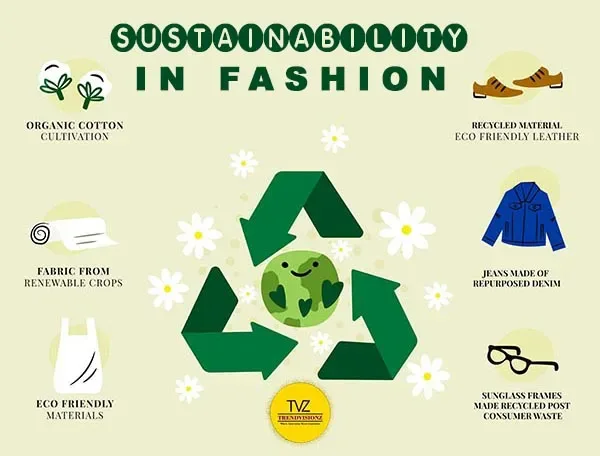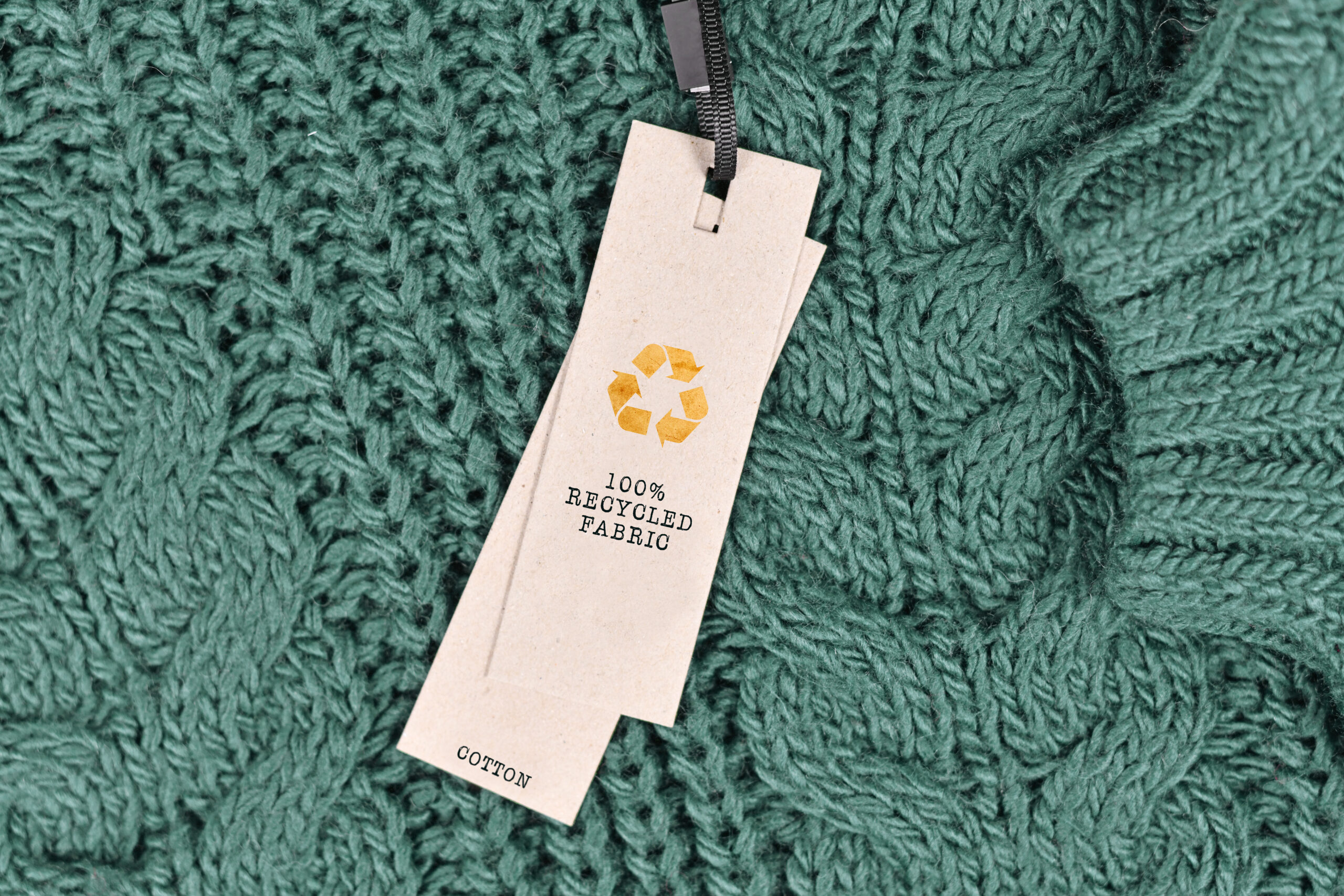Remain Ahead of the Curve by Exploring Cutting-edge Style Patterns
In a sector as dynamic as style, remaining ahead entails greater than simply following present trends-- it demands an expedition of development. Smart fabrics, for instance, are transforming garments into useful work of arts, while 3D printing is changing layout procedures with its personalized, waste-reducing abilities. As sustainability comes to be a cornerstone, developments like environmentally friendly products and round style practices are reshaping environmental responsibility - Cape Town Sustainable Fashion. Additionally, the convergence of innovation and style advertises a brand-new age of consumer involvement. How, then, can these emerging fads redefine the future of style, and what ramifications do they hold for brand names looking for to grow in this advancing landscape?

Welcoming Smart Textiles
In recent years, the apparel industry has actually witnessed a transformative shift with the combination of smart textiles, an advanced development that blends modern technology with textile. This evolution represents not just a combination of visual appeals and performance but additionally a considerable leap towards sustainability and personalization in vogue. Smart textiles, additionally recognized as e-textiles, embed sophisticated electronic devices such as sensing units and conductive strings within the material, enabling garments to connect with the environment or the wearer.
These fabrics are created to check physical criteria, such as heart rate or body temperature level, offering real-time health analytics. Past health and wellness applications, clever textiles are also being utilized for flexible clothes, which can change color or pattern in response to ecological stimulations, hence supplying a vibrant style experience.
Moreover, the development of energy-harvesting fabrics that create power from activity or sunlight is leading the way for self-sufficient wearable innovation. This innovation is appealing to eco conscious consumers and designers intending to lower the environmental footprint of style. As r & d in this area advance, clever fabrics are expected to end up being progressively prevalent, improving the landscape of contemporary fashion with their multifunctional abilities.
The Increase of 3D Printing
Revolutionizing the production landscape, 3D printing has actually become a game-changer in the fashion business. This sophisticated modern technology has allowed developers to push the limits of imagination, creating intricate and customized garments that were previously inconceivable. By leveraging electronic layout and additive manufacturing, 3D printing facilitates the production of complex geometries and patterns, allowing developers to trying out brand-new appearances and structures.
A noteworthy benefit of 3D printing in vogue is its capacity to generate on-demand, decreasing waste and minimizing stock demands. This performance not only maximizes manufacturing procedures yet likewise permits fast prototyping, allowing developers to bring their visions to life in a much shorter duration. Moreover, 3D printing supports customization somewhat unequaled by traditional techniques, providing personalized fits and distinct designs tailored to private customer choices.
The increase of 3D printing has actually likewise democratized fashion, making it available to arising developers who can currently make top quality items without significant monetary investment in standard production facilities. As modern technology continues to advancement, the apparel industry is positioned to harness the full potential of 3D printing, discovering new materials and techniques that will definitely redefine how fashion is developed and created.
Lasting Style Advancements
As the garment industry grapples with journalism demand for ecological responsibility, lasting style developments have actually arised at the center of transformative change. The expanding recognition of ecological effect has actually fueled a shift towards even more eco-conscious methods and products. Brands and developers are currently focusing on sustainability, integrating approaches that decrease waste and lower carbon impacts.
One significant advancement is the increase of circular fashion, which stresses recycling and upcycling to extend the lifecycle of garments. This method not only reduces waste but also motivates consumers to embrace a much more mindful strategy to clothing consumption. Additionally, using lasting products, such as organic cotton, hemp, and recycled polyester, has actually gotten grip. These products need less water and power during manufacturing, dramatically lessening environmental effect.
An additional advancement depends on the fostering of ingenious dyeing techniques that use waterless procedures or natural dyes, consequently reducing the vast quantities of water and chemicals generally utilized in fabric dyeing. Furthermore, developments in biotechnology have brought about the production of lab-grown natural leather and fabrics, using cruelty-free and eco-friendly choices to standard materials. Via these introducing efforts, the garment industry is making meaningful strides towards a more lasting future.

Tech-Integrated Garments
Tech-integrated garments stands for a groundbreaking blend of fashion and technology, improving how people engage with their clothes. This innovative domain name is noted by the incorporation of smart fabrics and ingrained electronic elements, enhancing both functionality and aesthetic appeal. From fitness trackers embedded in sportswear to warmed coats managed through mobile phone apps, tech-integrated garments uses consumers unprecedented comfort and adaptability.
Pioneering brands are driving this fad, concentrating on producing garments that reply to ecological stimulations or user commands. As an example, some garments can change color or pattern in action to temperature shifts, while others include biometric sensors to monitor health metrics like heart price or stress levels. The seamless combination of technology into fabrics likewise reaches environmental sustainability, with initiatives to create self-cleaning textiles or garments that adapt to weather, hence decreasing the requirement for numerous layers.
Furthermore, the introduction of wearable innovation is not just limited to apparel however expands to devices like watches and glasses, more broadening the scope of tech-integrated fashion. As the market remains to introduce, the capacity for modification and customization in garments expands, providing customers special, tech-enhanced fashion experiences that provide to their individual demands and choices.
Future of Virtual Fashion
In recent times, the future of virtual style has actually arised as a transformative force within the industry, leveraging improvements in this hyperlink digital technology to redefine just how fashion is produced, experienced, and taken in. By integrating augmented reality (AR), online reality (VIRTUAL REALITY), and 3D style tools, developers can now craft interactive and immersive experiences that go beyond traditional style limits. Virtual fashion enables the creation of garments that exist entirely in electronic settings, supplying endless possibilities for technology without the restrictions of physical production.
This electronic shift not just offers possibilities for innovative expression yet likewise addresses sustainability issues integral in conventional style practices. Cape Town Sustainable Fashion. By removing the demand for physical resources, digital fashion minimizes waste and minimizes carbon impacts. Additionally, the increase of digital fashion straightens with the raising consumer need for unique and personalized experiences, as digital garments can be tailored and customized to individual choices effortlessly

Final Thought
The apparel industry's future depend on the assimilation of ingenious technologies and sustainable practices - Cape Town Sustainable Fashion. Smart fabrics and tech-integrated apparel are improving performance, while 3D printing offers opportunities for modification and waste decrease. Sustainable style, through environment-friendly products and round techniques, demonstrates a dedication to environmental stewardship. In addition, virtual style is positioned to redefine consumer interactions. Adjusting to these trends is crucial for brands seeking to continue to be affordable and pertinent in this swiftly evolving landscape.
In current years, the style sector has experienced a transformative change with the integration of wise textiles, an innovative innovation that blends technology with material.As the style industry grapples with the pushing next page need for ecological responsibility, lasting style advancements have arised at the leading edge of transformative adjustment.In current years, the future of online style has actually arised as a transformative pressure within the market, leveraging innovations in electronic modern technology to redefine just how style is developed, experienced, and eaten. The increase of online fashion lines up with the raising customer need for tailored and special experiences, more information as online garments can be personalized and tailored to individual preferences with convenience.
The fashion sector's future lies in the integration of cutting-edge technologies and lasting methods.